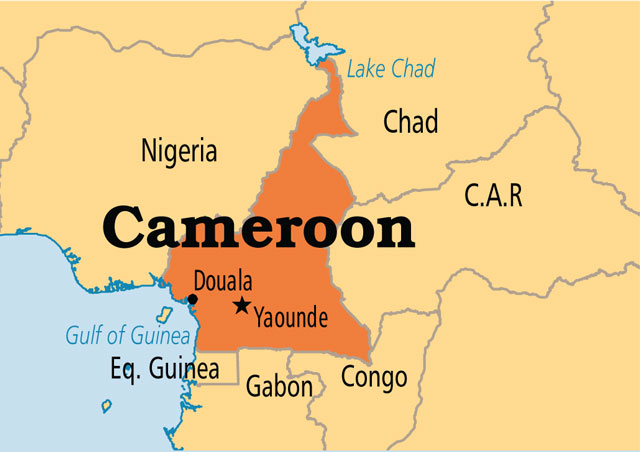
GUIDER, Cameroon | AFP | The two big maps show the districts of the northern Cameroonian town of Guider along with its brothels, nightclubs and other seedy spots to identify places from where AIDS could spread among adolescents.
Cameroon, a country of 23 million that hugs Africa’s Gulf of Guinea, has one of the highest HIV/AIDS prevalence rates in the world.
“The maps highlight the high-risk zones for transmission,” said Boris Mbaho Tchaptchet, 21, speaking at a local youth club.
“We located the love hotels, the video clubs, the cabarets, the underground meeting places before putting into place an action and prevention plan in our community,” he said.
The club in Guider was one of those selected for the “All In! End Aids among Adolescents” project launched in August 2015 with the backing of the UN children’s agency UNICEF.
According to official figures, 79,771 children and adolescents are HIV-positive, but experts say it is much higher.
“This platform brings together all the interventions fighting HIV in the country targeting young people,” said Jules Ngwa Edielle, who runs the HIV prevention in Cameroon’s youth and civic education ministry.
It ropes in local administrative, political and religious authorities to fight the disease.
– ‘You think I’m sick? –
With his colleagues, 21-year-old Bouba Saliou was trained as a peer-group educator in his neighbourhood.
“My role is to talk with other young people, ask them questions to understand their situation and to encourage them to get tested,” he explained.
But broaching the delicate issue is not without its pitfalls.
“Some people react saying, ‘You think I’m sick? Have you ever seen me having sexual relations?’
“Other simply refuse, saying that they are confident about their status. But I try to convince anyway,” he added with smile.
Saliou cites the case of a 17-year-old who found out he was HIV-positive because of his intervention.
“He was very angry at me when he got the results,” he recalled. “But today we talk regularly and he tells he is following his treatment regularly.”
This community-based approach is essential if Cameroon is to attain the 90-90-90 target set by the UNAIDS, which Cameroon signed up to back in 2015.
The aim is to get to the point where 90 percent of those who are HIV-positive know about their condition; where 90 percent of those who know are on retroviral treatment; and where 90 percent of those receiving that treatment achieve viral suppression.
The hope is to be able to wipe out the virus by 2030.
Therese Nduwimana, who runs UNICEF Cameroon’s HIV unit, said the programme had proved its worth in the north of the country with the No Limit for Women Project (Nolfowop).
“With a budget of just $40,000 a year the results have been spectacular,” she said.
“In just months, the number of HIV-positive children identified has been multiplied by four,” she said.
However, one of the problems is an acute shortage of medical staff. The hospital in Garoua, which serves an area with 2.7 million people, only has one paediatrist and one gynaecologist.
– Door-to-door campaigns –
A group of around 30 women were gathered at one of the town’s health centres, waiting to be tested about their HIV status. The result is announced almost immediately.
“Our volunteers have gone door to door to encourage every pregnant woman to get tested,” said Odette Etame, who heads the Nolfowop project.
Other mothers acting as mentors then made home visits to physically accompany HIV-positive women and their children for anti-retroviral treatment, she added.
This was one way to reach people who would other wise be lost from view, she said.
Cameroon had a 5.75-percent HIV prevalence rate for pregnant women in 2016, making it one of the 10 countries responsible for 75 percent of new paediatric infections worldwide.
 The Independent Uganda: You get the Truth we Pay the Price
The Independent Uganda: You get the Truth we Pay the Price



